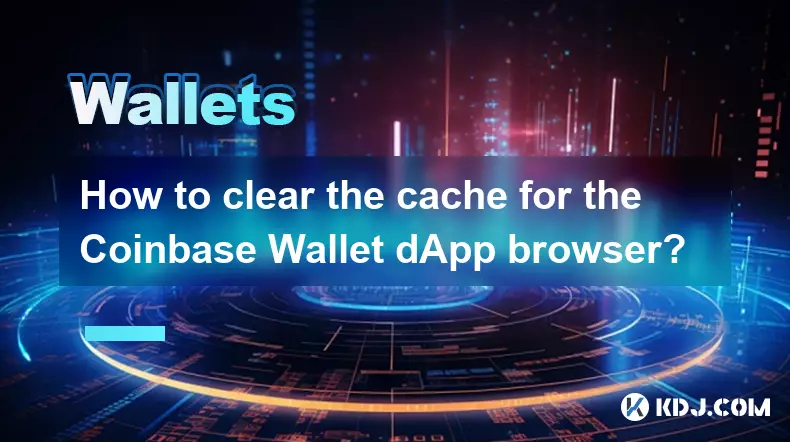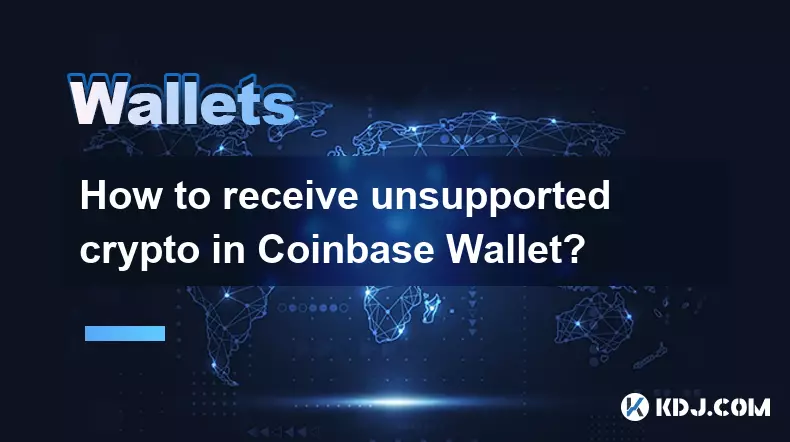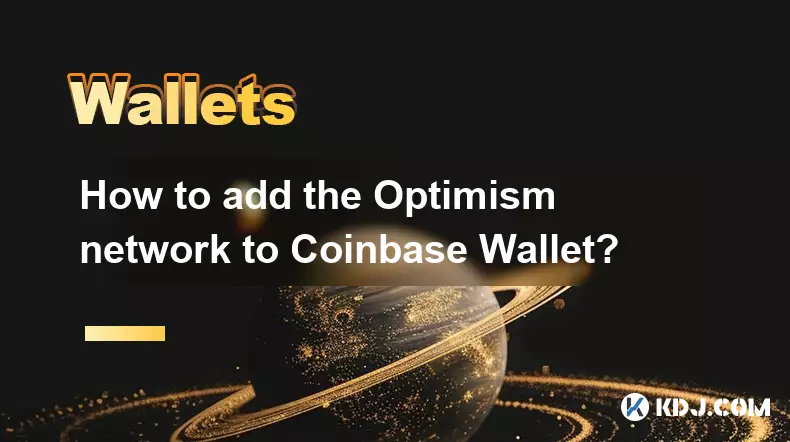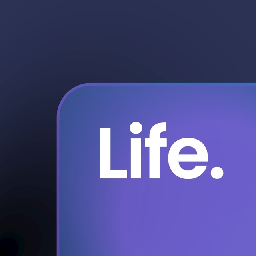-
 bitcoin
bitcoin $110415.485139 USD
-1.74% -
 ethereum
ethereum $3914.309383 USD
-1.58% -
 tether
tether $1.000075 USD
0.00% -
 bnb
bnb $1116.910315 USD
1.41% -
 xrp
xrp $2.562069 USD
-1.96% -
 solana
solana $193.888910 USD
-0.02% -
 usd-coin
usd-coin $0.999800 USD
-0.01% -
 dogecoin
dogecoin $0.192383 USD
-0.47% -
 tron
tron $0.296815 USD
0.66% -
 cardano
cardano $0.641286 USD
-0.18% -
 hyperliquid
hyperliquid $47.495653 USD
-0.35% -
 chainlink
chainlink $18.106533 USD
1.42% -
 bitcoin-cash
bitcoin-cash $561.296588 USD
0.00% -
 stellar
stellar $0.316591 USD
-0.21% -
 ethena-usde
ethena-usde $0.999227 USD
-0.01%
Where can I find my dApp transaction history in Coinbase Wallet?
In Coinbase Wallet, dApp transaction history is accessible via the "Activity" tab, where all on-chain interactions like swaps, approvals, and staking are recorded and viewable per network.
Oct 26, 2025 at 12:37 am

Accessing dApp Transaction History in Coinbase Wallet
1. Open the Coinbase Wallet application on your mobile device and ensure you are logged into your account. Navigate to the main dashboard where your wallet balance and assets are displayed.
2. Tap on the 'Activity' tab located at the bottom of the screen. This section aggregates all transactions associated with your wallet address, including those from decentralized applications (dApps).
3. Scroll through the list to view transactions categorized by date. Each entry includes details such as transaction type, token involved, amount, and status (confirmed or pending).
4. To filter dApp-specific interactions, look for entries labeled as 'Contract Interaction,' 'Swap,' 'Stake,' or similar actions typically linked to smart contract executions rather than standard transfers.
5. Tap on any transaction to expand its details. You will see the blockchain network used (e.g., Ethereum, Base), gas fees, block confirmation status, and a link to view the transaction on a block explorer like Etherscan.
Understanding On-Chain Data for dApp Interactions
1. Every interaction with a dApp—such as swapping tokens, providing liquidity, or minting NFTs—is recorded as a transaction on the underlying blockchain. These are not stored within Coinbase Wallet’s internal system but exist publicly on-chain.
2. The wallet pulls this data by querying nodes on the respective network using your public address. This means that even if a dApp does not report activity directly to Coinbase, the transaction remains visible because it is part of the immutable ledger.
3. Some advanced dApp actions may appear cryptic in the activity feed due to function call encoding. For example, a 'Approve' transaction indicates permission granted to a contract, while 'TransferFrom' suggests movement initiated by a third-party contract.
4. If a transaction seems missing, verify that you're connected to the correct network. Users managing assets across multiple chains (e.g., Ethereum, Polygon, Arbitrum) must switch networks in the wallet settings to view activity per chain.
5. Transactions involving dApps are irreversible and transparent; always review the smart contract address and method call before confirming any action in the wallet interface.
Using External Tools to Verify dApp Activity
1. When detailed analysis is needed, copy the transaction hash (txid) from the activity log and paste it into a blockchain explorer corresponding to the network used (e.g., Etherscan for Ethereum, Arbiscan for Arbitrum).
2. On the explorer page, review the 'Input Data' field to understand which function was called in the smart contract. Decoded logs often reveal parameters such as token amounts, recipient addresses, or deadlines for swaps.
3. Check the 'Internal Transactions' or 'Logs' tabs on the explorer to identify secondary operations triggered by the main transaction, such as fee distributions or reward claims executed by the dApp’s backend logic.
4. If discrepancies arise between what the dApp displays and the wallet history, trust the on-chain record as the definitive source of truth.
5. Bookmark frequently used explorers and set up transaction alerts via tools like EthVM or Dune Analytics dashboards to monitor future dApp interactions proactively.
Security Considerations When Reviewing dApp Transactions
1. Never share your recovery phrase or private key with any dApp, regardless of how legitimate it appears. Coinbase Wallet does not require these credentials to interact with decentralized services.
2. Be cautious of phishing sites mimicking familiar dApps. Always double-check URLs and ensure connections are made through trusted sources like https://app.uniswap.org or verified project domains.
3. Revoke permissions for dApps you no longer use. Excessive token approvals can be exploited if a contract has vulnerabilities. Use built-in revocation tools within Coinbase Wallet or visit sites like revoke.cash to manage access safely.
4. Monitor for unauthorized transactions. If an unknown contract interaction appears, disconnect your wallet immediately and assess whether your device or seed phrase has been compromised.
5. Regularly audit your approval limits and transaction patterns to detect anomalies early and reduce exposure to malicious contracts.
Frequently Asked Questions
Why doesn’t my dApp transaction show up in Coinbase Wallet?
It may take time for the transaction to be confirmed and indexed by the blockchain. Ensure you’re viewing the correct network. If the issue persists, check the transaction hash on a block explorer to confirm it was broadcasted successfully.
Can I export my dApp transaction history from Coinbase Wallet?
No direct export feature exists within the app. However, you can manually record transaction hashes and use blockchain explorers or third-party portfolio trackers like Zapper or DeBank to generate reports based on your wallet address.
Does Coinbase Wallet track failed dApp transactions?
Yes, failed transactions appear in the activity feed with a 'Failed' status. These still consume gas and are part of the on-chain record, so they remain visible for auditing purposes.
Are dApp approvals considered transactions in the history?
Yes, every token approval is a write transaction on the blockchain. It will appear in your history as a 'Contract Interaction' and include the spender contract address and approved amount.
Disclaimer:info@kdj.com
The information provided is not trading advice. kdj.com does not assume any responsibility for any investments made based on the information provided in this article. Cryptocurrencies are highly volatile and it is highly recommended that you invest with caution after thorough research!
If you believe that the content used on this website infringes your copyright, please contact us immediately (info@kdj.com) and we will delete it promptly.
- Essex Post Office, 5p Coins, and King Charles: A Royal Mint Revelation!
- 2025-10-23 10:30:16
- Waymo's Newark Airport AV Tests: Alphabet's AI Gamble Pays Off?
- 2025-10-23 10:30:16
- King Charles 5p Coins: A Royal Flush in Your Pocket?
- 2025-10-23 10:35:18
- Solana, Crypto Advisory, and Forward Industries: A New York Minute on the Future of Finance
- 2025-10-23 08:51:22
- MAGACOIN: Ethereum Whales Dive into the Hottest Presale of 2025
- 2025-10-23 08:51:22
- Kadena's End of the Road? KDA Token Plummets Amid Project Abandonment
- 2025-10-23 08:55:34
Related knowledge

How to clear the cache for the Coinbase Wallet dApp browser?
Oct 27,2025 at 12:54pm
Understanding the Coinbase Wallet dApp Browser Cache1. The Coinbase Wallet mobile application includes a built-in dApp browser that allows users to in...

How to receive unsupported crypto in Coinbase Wallet?
Oct 25,2025 at 09:48am
Understanding Unsupported Cryptocurrencies in Coinbase Wallet1. Coinbase Wallet supports a wide range of cryptocurrencies, but not every token availab...

How to interact with smart contracts using Coinbase Wallet?
Oct 27,2025 at 12:00am
Connecting Coinbase Wallet to a dApp Interface1. Open the decentralized application (dApp) you want to interact with in your mobile browser or web bro...

How to solve connection issues with the Coinbase Wallet extension?
Oct 28,2025 at 12:02am
Troubleshooting Network and Browser Compatibility1. Ensure your browser is up to date. Older versions may lack support for modern Web3 protocols requi...

What are the security features of Coinbase Wallet?
Oct 31,2025 at 12:37am
Understanding Coinbase Wallet’s Core Security Framework1. Coinbase Wallet operates as a non-custodial wallet, meaning users maintain full control over...

How to add the Optimism network to Coinbase Wallet?
Oct 30,2025 at 04:01am
Understanding the Optimism Network and Its Integration1. Optimism is a Layer 2 scaling solution built on Ethereum, designed to reduce transaction fees...

How to clear the cache for the Coinbase Wallet dApp browser?
Oct 27,2025 at 12:54pm
Understanding the Coinbase Wallet dApp Browser Cache1. The Coinbase Wallet mobile application includes a built-in dApp browser that allows users to in...

How to receive unsupported crypto in Coinbase Wallet?
Oct 25,2025 at 09:48am
Understanding Unsupported Cryptocurrencies in Coinbase Wallet1. Coinbase Wallet supports a wide range of cryptocurrencies, but not every token availab...

How to interact with smart contracts using Coinbase Wallet?
Oct 27,2025 at 12:00am
Connecting Coinbase Wallet to a dApp Interface1. Open the decentralized application (dApp) you want to interact with in your mobile browser or web bro...

How to solve connection issues with the Coinbase Wallet extension?
Oct 28,2025 at 12:02am
Troubleshooting Network and Browser Compatibility1. Ensure your browser is up to date. Older versions may lack support for modern Web3 protocols requi...

What are the security features of Coinbase Wallet?
Oct 31,2025 at 12:37am
Understanding Coinbase Wallet’s Core Security Framework1. Coinbase Wallet operates as a non-custodial wallet, meaning users maintain full control over...

How to add the Optimism network to Coinbase Wallet?
Oct 30,2025 at 04:01am
Understanding the Optimism Network and Its Integration1. Optimism is a Layer 2 scaling solution built on Ethereum, designed to reduce transaction fees...
See all articles









































































